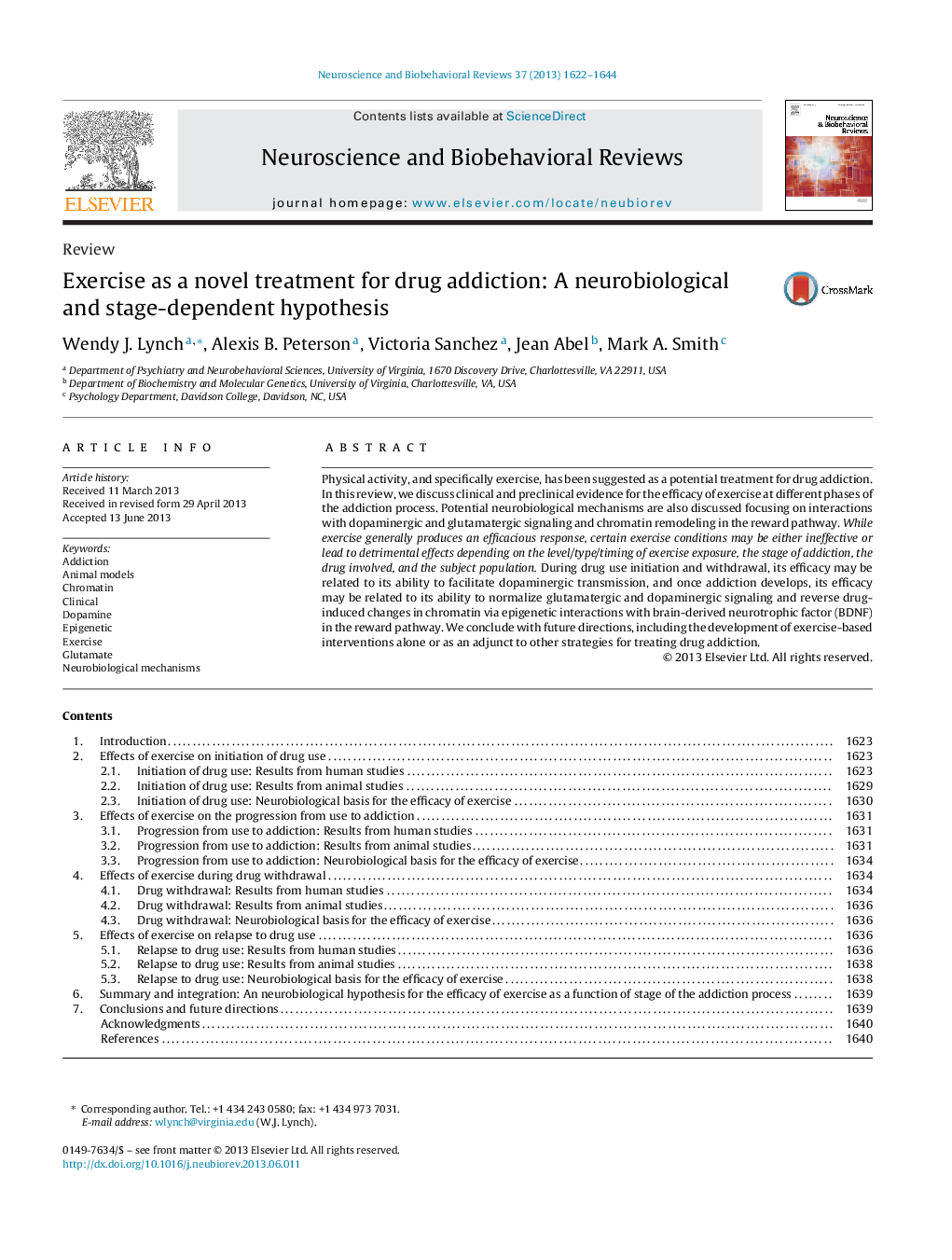| Article ID | Journal | Published Year | Pages | File Type |
|---|---|---|---|---|
| 10461761 | Neuroscience & Biobehavioral Reviews | 2013 | 23 Pages |
Abstract
Physical activity, and specifically exercise, has been suggested as a potential treatment for drug addiction. In this review, we discuss clinical and preclinical evidence for the efficacy of exercise at different phases of the addiction process. Potential neurobiological mechanisms are also discussed focusing on interactions with dopaminergic and glutamatergic signaling and chromatin remodeling in the reward pathway. While exercise generally produces an efficacious response, certain exercise conditions may be either ineffective or lead to detrimental effects depending on the level/type/timing of exercise exposure, the stage of addiction, the drug involved, and the subject population. During drug use initiation and withdrawal, its efficacy may be related to its ability to facilitate dopaminergic transmission, and once addiction develops, its efficacy may be related to its ability to normalize glutamatergic and dopaminergic signaling and reverse drug-induced changes in chromatin via epigenetic interactions with brain-derived neurotrophic factor (BDNF) in the reward pathway. We conclude with future directions, including the development of exercise-based interventions alone or as an adjunct to other strategies for treating drug addiction.
Keywords
Related Topics
Life Sciences
Neuroscience
Behavioral Neuroscience
Authors
Wendy J. Lynch, Alexis B. Peterson, Victoria Sanchez, Jean Abel, Mark A. Smith,
